Shelling Hits Near Ukrainian Nuclear Plant as Russia Rattles Nuclear Saber at the US
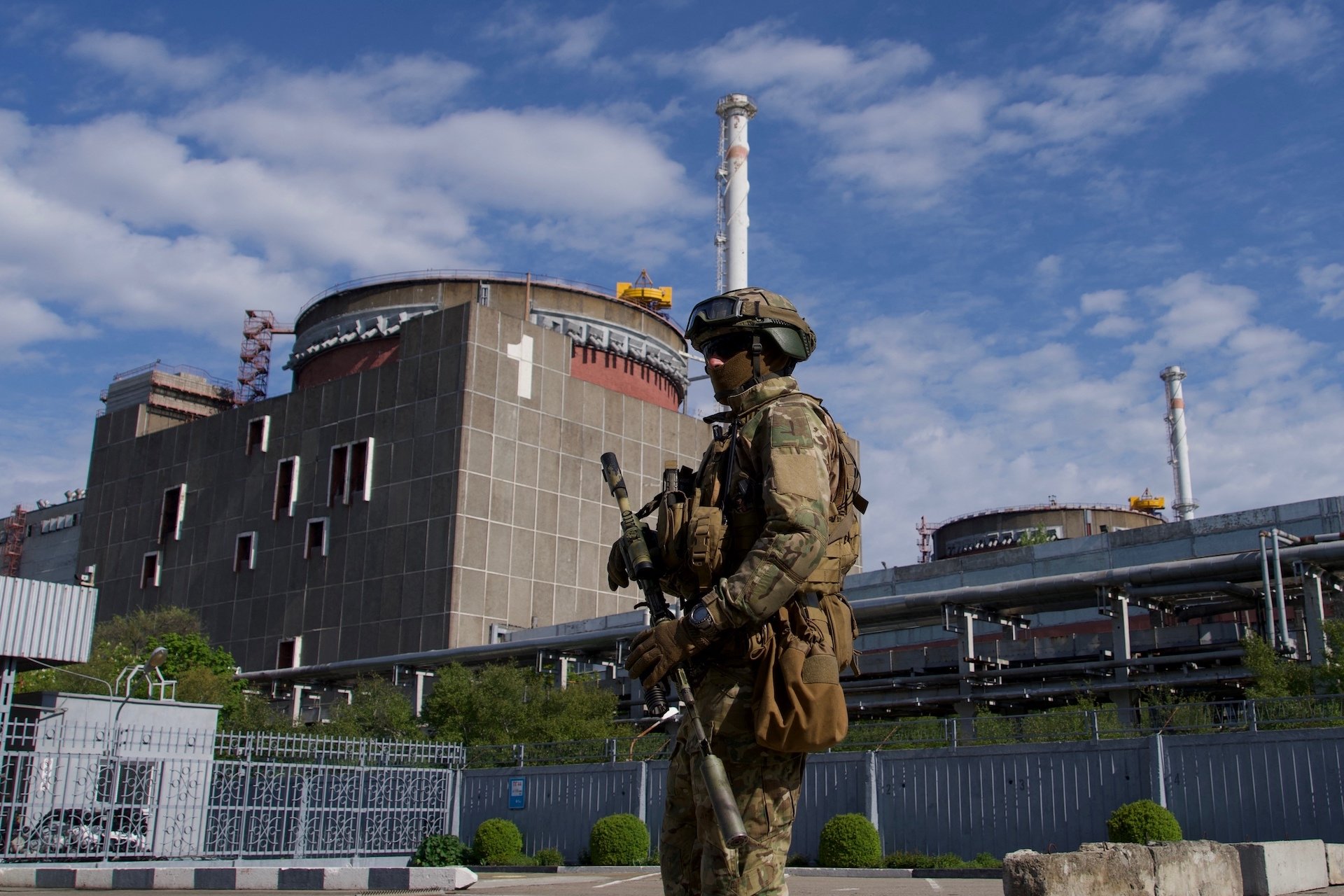
Russia and Ukraine traded accusations over shelling around the Zaporizhzhia Nuclear Power Station in southeastern Ukraine. Photo by Andrew Borodulin/AFP/Getty Images.
KYIV, Ukraine — Moscow announced on Monday, Aug. 8, that it was barring US inspectors from visiting Russia’s nuclear weapons sites — a key tenet of the New START arms limitation treaty. The Kremlin's move, which risks scuttling its only major arms-control agreement left with Washington, follows reports over the weekend of more Russian attacks at the Zaporizhzhia Nuclear Power Station in southeastern Ukraine.
"Any military firepower directed at or from the facility would amount to playing with fire, with potentially catastrophic consequences,” International Atomic Energy Agency director general Rafael Mariano Grossi said about the attacks in a statement.
Russia’s conventional forces — land, sea, and air — have underperformed in Ukraine, resetting many assumptions in the West about Russia’s conventional combat power. Even so, Russia still possesses the world’s largest nuclear arsenal — a fact that Moscow flaunts to its political and military advantage as the war in Ukraine drags on.
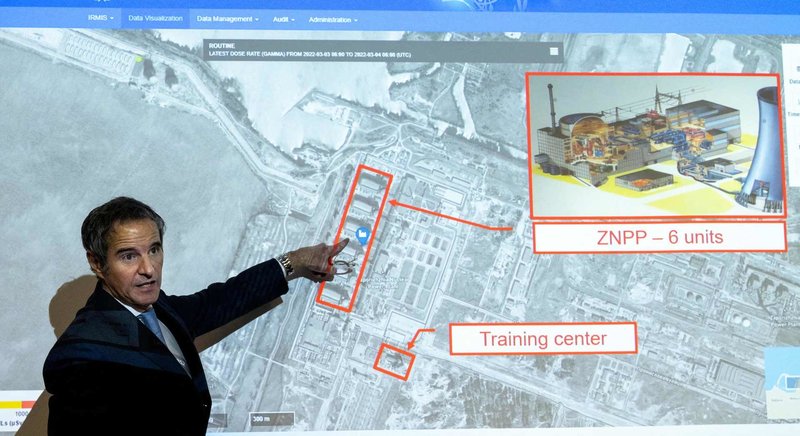
Rafael Grossi, Director General of the International Atomic Energy Agency (IAEA), points on a map of the Ukrainian Zaporizhzhia nuclear power plant as he informs the press about the situation of nuclear powerplants in Ukraine during a special press conference at the IAEA headquarters in Vienna, Austria on March 4, 2022. - Grossi offered to travel to Chernobyl in order to negotiate with Ukraine and Russia to try to ensure the security of Ukraine's nuclear sites. (Photo by JOE KLAMAR / AFP) (Photo by JOE KLAMAR/AFP via Getty Images)
"Since launching its full-scale invasion of Ukraine, Russia has conducted an intense campaign of nuclear signaling and threats designed to provide it with a strategic advantage," Gustav Kressel, senior policy fellow at the European Council on Foreign Relations, wrote in July.
According to Kressel, "The Kremlin aims to not only deter the West from directly interfering in its attempts to conquer Ukraine but also to limit Western political, economic, and military support for the country."
Similarly, some analysts said that Russian forces have threatened the possibility of a Ukrainian nuclear power plant disaster in a bid to interrupt the country’s lifeline of Western military support.
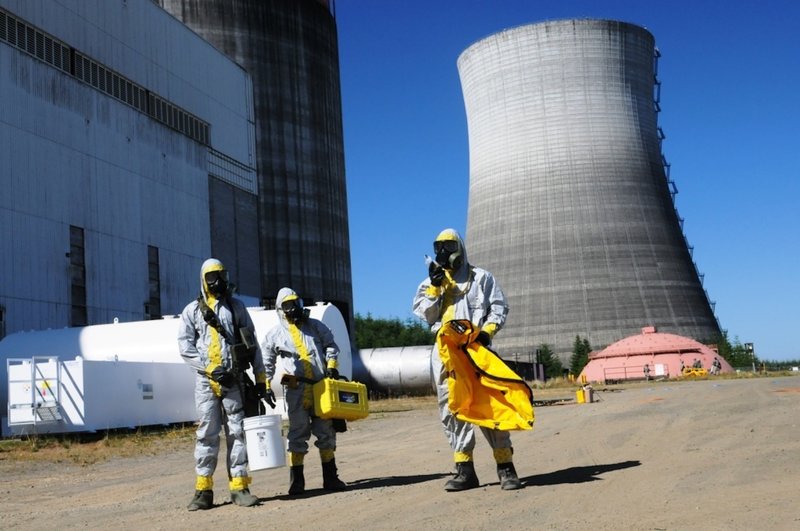
An initial entry team wears protective suits and carries chemical agent detectors and identifiers as they make their way to a simulated chemical weapons stockpile. These chemical, biological, radiological, and nuclear operations specialists assigned to the 23rd Chemical Battalion conducted hazardous response platoon training Aug. 16 at the Satsop nuclear power plant development in Elma, Wash.
According to a recent report by the Institute for the Study of War, “Russian forces are likely using Ukraine’s Zaporizhzhia Nuclear Power Plant (NPP) in Enerhodar to play on Western fears of a nuclear disaster in Ukraine, likely in an effort to degrade Western will to provide military support to a Ukrainian counteroffensive."
Russian forces seized control of the Zaporizhzhia Nuclear Power Plant in March. Petro Kotin, the head of Ukraine’s state-run nuclear power company, Enerhoatom, recently told the BBC that some 500 Russian soldiers are currently garrisoned at the Soviet-era plant.
Moscow, for its part, has blamed Ukrainian forces for the recent attacks.
‘Futility’
The original START treaty was signed in 1991, just six months before the Soviet Union dissolved. Signed by former Presidents Barack Obama and Dmitry Medvedev in 2010, and last renewed in February 2021, the New START treaty limits Russia and the US each to 1,550 deployed nuclear warheads and 700 deployed ballistic missiles and heavy bombers. With New START set to expire in 2026, US President Joe Biden has said he is willing to negotiate the treaty’s extension.
Although the New START treaty permits 18 on-site inspections by Russian and American teams each year, neither side has conducted an inspection this year, the US State Department reports on its website.
Despite its decision on Monday to bar US New START inspectors, Moscow said it would still abide by the New START treaty’s terms. In a Monday statement, Russia’s Foreign Ministry called the restriction a temporary move, claiming that new American travel restrictions have created "unilateral advantages for the United States and effectively deprive the Russian Federation of the right to conduct inspections on American territory.”
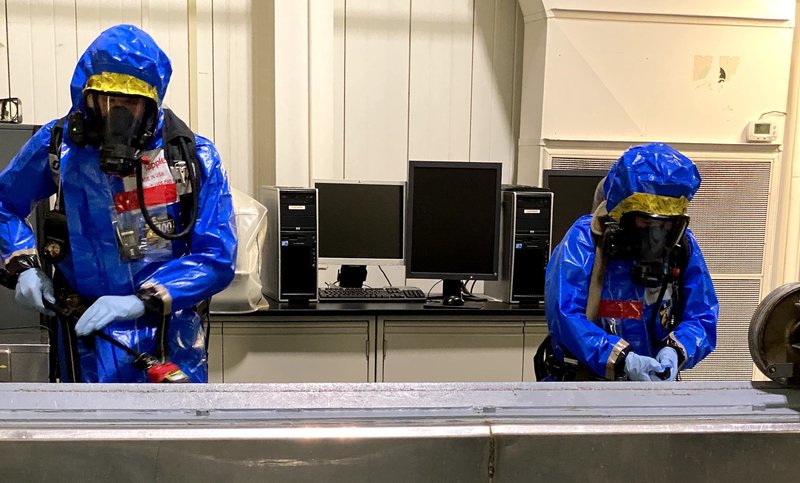
Majs. Mark Quint (left) and Stacey Yarborough make a radiation contamination assessment of the nuclear reactor pool at the Breazeale Nuclear Reactor at Penn State University during Operation Nittany Lion.
“I don’t think it is a significant shift in Russia’s policy; rather, it fits the pattern of Russian obfuscations and arms-control violations we’ve become so familiar with,” said Michaela Dodge, a research scholar at the National Institute for Public Policy who specializes in nuclear weapons.
“We haven’t had inspections in over two years at this point, and the New START verification regime has been flawed from the beginning,” Dodge told Coffee or Die Magazine. “It provided transparency rather than verification. It just points to the futility of arms control with a revisionist adversary who does not share any political goals with us.”
‘Escalate to Deescalate’
The Federation of American Scientists reported this year that Russia and the US collectively possess about 90% of the world’s nuclear weapons. According to the group, Russia currently wields 5,977 nuclear weapons, compared with America’s 5,428. China has the world’s third-largest nuclear arsenal with 350 warheads, according to the FAS.
Despite the relative parity in total warheads, Russia enjoys a notable advantage over the US in its number of tactical nuclear weapons. Typically armed with warheads of much lower explosive yields than the hydrogen bombs developed at the height of the Cold War, tactical nuclear weapons are limited in range and better suited for targeting military facilities and combat units, rather than destroying whole cities.
According to the Department of Defense’s 2018 Nuclear Posture Review, Russia has about 2,000 tactical nuclear weapons. The US has only about 230 of the devices, the Bulletin of American Scientists reported in 2019.
The weapons, which can be carried by short- or intermediate-range weapons, give Russia an advantage at the lower end of the escalatory ladder, said Dodge, the nuclear weapons expert.
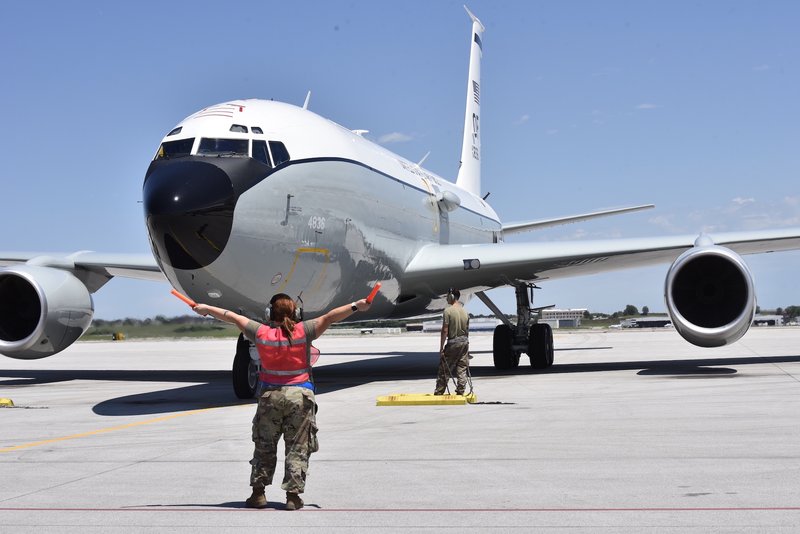
A US Air Force WC-135R Constant Phoenix arrives in Lincoln, Nebraska, in July. WC-135s carry an array of "sniffer" sensors that detect radioactivity, clues to nuclear events. Air Force Photo by Ryan Hansen
“I do not think the current situation increases the risk of nuclear use, per se. But that doesn’t mean we should be complacent,” Dodge said. “It is a logical continuation of the Russians implementing the ‘escalate to deescalate’ doctrine and using coercive threats on the lower level of the escalatory ladder where the US has no credible — or very few credible — response options given the disparity in tactical nuclear weapons.”
‘Coercive Strategy’
A 2014 revision of Russia’s national security doctrine stated that, in addition to responding to attacks by weapons of mass destruction, “the Russian Federation reserves the right to use nuclear weapons […] in the event of aggression against the Russian Federation involving the use of conventional weapons when the very existence of the state is under threat.”
Within that framework, tactical nuclear weapons have become more important to contemporary Russian military planners than during the Soviet era.
“Russian thinking differs from its Soviet predecessor in that it considers the possibility of limited nuclear use as part of efforts to inflict ‘unacceptable damage’ upon an opponent within the context of a coercive strategy,” the Royal United Services Institute, a British defense think tank, reported in June, adding: “This is dissimilar to the Soviets who […] assumed that even tactical nuclear use in Europe would assume catastrophic proportions. For Russia, nonstrategic nuclear weapons are a controllable part of a framework for achieving both battlefield results and war termination.”
Russia again updated its nuclear weapons doctrine in June 2020, authorizing the use of nuclear strikes after “reliable reports about the launch of ballistic missiles at Russia” — without the caveat that nuclear warheads need to be on those missiles. Even so, Stephen Blank, senior fellow for Russia at the Foreign Policy Institute, said that Russia’s recent decision to bar US weapons inspectors, while troubling, has probably not raised the likelihood of a nuclear exchange.
“But,” Blank told Coffee or Die, “it further poisons relations and heightens Moscow's eternal temptation to threaten nuclear war. It obviously also reflects a policy shift because it rejects a core principle of all previous arms control treaties, names. But it is fully in line with Moscow's long-term priority of nuclear threats and likelihood of first strike.”
Thomas Moore, a former senior professional staff member for the Senate Committee on Foreign Relations, agreed that Moscow's suspension of New START inspections does not "raise any risk of nuclear war."
"Inspections confirm what you already know, based on Russia's declaration and notifications under other parts of the treaty. Most of the agreed inspection activities are for well understood missiles,” Moore told Coffee or Die.
He added, “What we may miss is the ability of the Russian side to do exhibitions of new systems.”
Before the full-scale war in Ukraine, Moscow and Washington were already at loggerheads over several key issues during New START’s renewal negotiations. In particular, US negotiators argued the pact should include limitations on Russia’s arsenal of novel, nuclear-capable weapons systems — including a nuclear-powered underwater drone, as well as a nuclear-powered cruise missile.
“The Russians can upload some systems with additional nuclear warheads without generating obvious signatures,” Dodge said. “I am not sure inspections would be useful in detecting these if the Russians wanted to conceal them. Likely not.”
READ NEXT: Why ‘Catch-22’ Is the Closest Thing to the Truth About War

BRCC and Bad Moon Print Press team up for an exclusive, limited-edition T-shirt design!
BRCC partners with Team Room Design for an exclusive T-shirt release!
Thirty Seconds Out has partnered with BRCC for an exclusive shirt design invoking the God of Winter.
Lucas O'Hara of Grizzly Forge has teamed up with BRCC for a badass, exclusive Shirt Club T-shirt design featuring his most popular knife and tiomahawk.
Coffee or Die sits down with one of the graphic designers behind Black Rifle Coffee's signature look and vibe.
Biden will award the Medal of Honor to a Vietnam War Army helicopter pilot who risked his life to save a reconnaissance team from almost certain death.
Ever wonder how much Jack Mandaville would f*ck sh*t up if he went back in time? The American Revolution didn't even see him coming.
A nearly 200-year-old West Point time capsule that at first appeared to yield little more than dust contains hidden treasure, the US Military Academy said.












